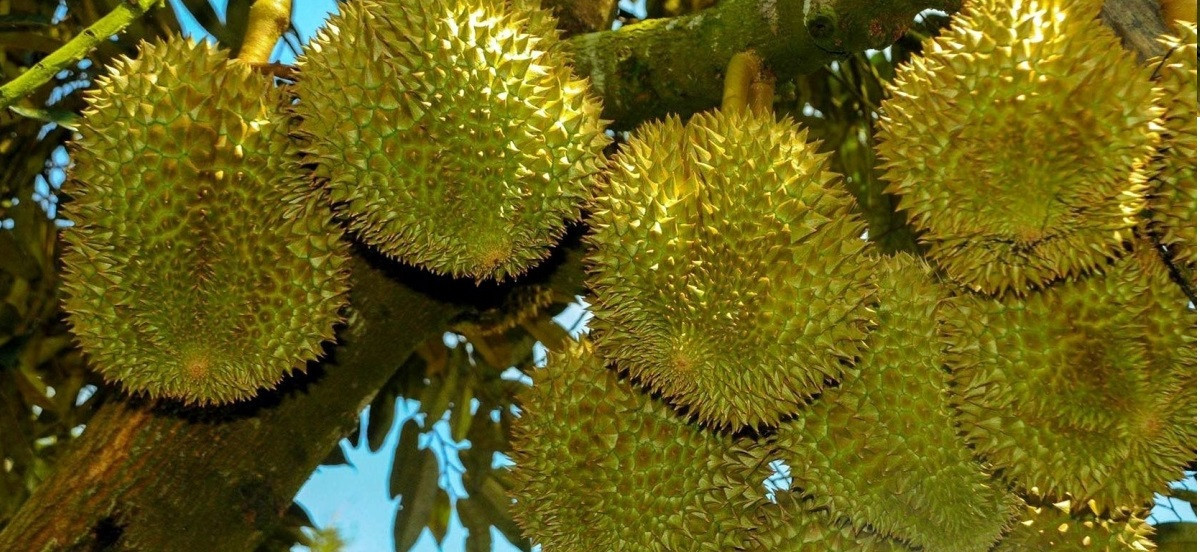
Members of Phu Quy Cooperative in Cai Lay district of Tien Giang province is busy these days harvesting durian to sell at the prices of VND97,000-125,000 per kilogram.
“With the current selling prices, the farmers with 6,000-7,000 sqm of durian fields can earn billions of VND,” said Phu Quy’s chair Luong Van Han.
He said the durian prices have soared recently because of the high demand from China. Petty merchants have been searching to collect durians throughout Tien Giang province.
Doan Nguyen Duc, chair of Hoang Anh Gia Lai (HAGL), said his company has just sold 440 tons of durian at nearly VND100,000 per kilogram, earning tens of billions of VND.
“The buyers of my durian are all big clients from China. As the output is small, I just can sell hundreds of tons,” Duc said.
Durian is mostly grown in Southeast Asia, but the biggest consumer is China.
In 2021, China’s fresh durian imports increased by 82.4 percent to $4.205 billion, four times higher than that of 2017. In 2022, the country spent $4.4 billion to import durian.
Despite the big spending, only 10 percent of Chinese people eat durian because the fruit is always very expensive.
Experts believe that China will remain the world’s largest durian consumer in the next 10 years and the market is expected to have the value of $20 billion by 2025. This poses a great opportunity for Vietnam to boost durian exports to China.
However, in the market, Vietnam will have to compete with three other strong rivals, including Thailand, the Philippines and Malaysia.
Thailand has been exporting durian to China for a long time, while the Philippines began exporting fresh durian to the market in January 2023 after a protocol was signed. Malaysia also wants to export its durian to China through official channel from 2024.
An agreement with six articles related to durian was signed between the two countries last October. Prior to that, the country began exporting frozen durian to China in 2017.
So, the competition in the Chinese market will be very stiff.
To retain the Chinese market, Thailand has decided to raise the required dry matter (DM) of durian and opened the Thailand-Laos-China railway route to carry durian to China in the fastest and least costly way.
However, experts commented that of the four durian exporters, Vietnam is holding great advantages. Dang Phuc Nguyen, secretary general of the Vietnam Association of Vegetables and Fruits, said it takes only 1.5 days to carry durian from growing areas in Vietnam to China. Therefore, Vietnam’s exports are fresh and have high quality, while the transportation cost is cheaper than in Thailand (6-8 days), Malaysia and the Philippines.
In terms of durian growing area, Thailand and Vietnam are the two biggest rivals. Malaysia and the Philippines have small growing areas and inconsiderable export volume.
Malaysian Musang King durian is famous, but it is difficult for the country to export fresh durian. Meanwhile, the yield is very low, just 5 tons per hectare, in the Philippines.
While other countries only have durian to export in high season, Vietnam has durian all year round to satisfy demand.
With outstanding advantages, Vietnam’s durian exports have witnessed a boom and tens of thousands of farmers have become VND billionaires when durian is collected at very high prices.
According to the Department of Crop Production under the Ministry of Agriculture and Rural Development (MARD), the total durian area in 2023 is 131,000 hectares, 20 percent up over 2022. But only 51 percent of the durian growing area can be harvested, with the output of 1 million tons.
As durian prices continue to be high which brings fat profits, farmers are rushing to grow durians. This has raised worry about the oversupply which may come in some years.
The durian growing area has been unceasingly expanding. HAGL now has 1,200 hectares of durian and it plans to expand the area to 2,000 hectares.
Tam An